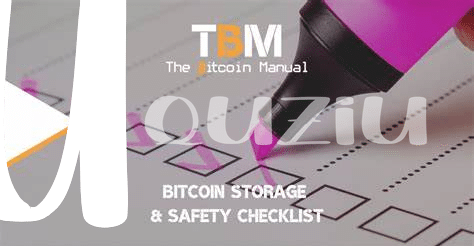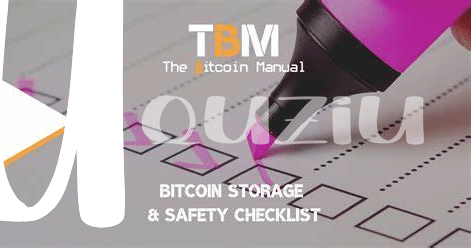Understanding the Importance of Secure Bitcoin Storage 🔒

Understanding the importance of secure Bitcoin storage is crucial in safeguarding your valuable digital assets. With the rise of Bitcoin thefts and hacking incidents, protecting your investment is paramount. Secure storage not only provides peace of mind but also ensures that your Bitcoins remain safe from unauthorized access and potential breaches.
To illustrate the importance further, consider a reliable Bitcoin storage device as a digital safe deposit box where you store your wealth. Just as you would choose a reputable bank to safeguard your physical valuables, selecting a secure storage device signifies your commitment to protecting your virtual currency. By understanding the significance of secure Bitcoin storage, you are taking proactive steps to secure your financial future in the digital realm.
| Features | Security Measures |
|---|---|
| Encrypted storage | Two-factor authentication |
| Offline cold storage | Biometric access |
| Multi-signature support | Backup seed phrases |
Researching Different Types of Bitcoin Storage Devices 💻
When delving into the realm of Bitcoin storage devices, it’s crucial to approach your research with a discerning eye. With the myriad of options available, understanding the nuances of each type is pivotal in making an informed decision. From hardware wallets that offer enhanced security features to mobile wallets providing convenient accessibility, exploring the spectrum of choices allows you to tailor your selection to suit your specific needs. Consider aspects such as user-friendliness, compatibility with different operating systems, and the level of security each device offers. Additionally, looking into the reputation and track record of the manufacturer can provide valuable insights into the reliability of the device. By immersing yourself in the diverse landscape of Bitcoin storage solutions, you empower yourself to make a well-informed choice that aligns with your requirements and preferences.
Comparing Features and Security Measures 🔍

When choosing a reliable Bitcoin storage device, it’s essential to compare various features and security measures offered by different options. Consider aspects like encryption capabilities, multi-signature support, compatibility with different cryptocurrencies, and ease of use. Look for devices that offer robust security features, such as hardware-based encryption and secure backup options. Additionally, take into account the track record of the manufacturer in terms of security breaches or vulnerabilities. By comparing these features and security measures, you can make an informed decision on selecting a storage device that meets your needs for securely storing your Bitcoin assets.
When evaluating Bitcoin storage devices, keep a keen eye on the level of security each device provides. Prioritize devices that offer advanced security features like PIN protection, passphrase encryption, and biometric authentication. Assess the reputation of the device in the cryptocurrency community and read reviews from other users to gauge their experiences with the device’s security features. By carefully comparing these aspects, you can choose a Bitcoin storage device that combines both robust security measures and user-friendly features, ensuring the safety of your digital assets.
Reading User Reviews and Expert Recommendations 📝

When seeking the ideal Bitcoin storage device, reviewing user feedback and expert suggestions can provide crucial insights into its performance and reliability. User reviews offer firsthand experiences, highlighting both advantages and drawbacks that may not be immediately apparent from specifications alone. On the other hand, expert recommendations often come from individuals with in-depth knowledge of the industry, offering valuable perspectives on the security and functionality of different devices. By synthesizing these two sources of information, you can make a more informed decision that aligns with your specific needs and preferences. For further guidance on safety standards for Bitcoin storage devices in Panama, you can refer to this informative article on safety standards for Bitcoin storage devices in Panama.
Setting up and Testing the Chosen Storage Device 🧪
After selecting the right Bitcoin storage device based on your needs and preferences, the next step involves setting it up and performing thorough testing to ensure its functionality and security features. This process typically includes following the manufacturer’s instructions for initialization, creating secure passwords or recovery phrases, and verifying that all features are working as expected. Conducting trial transactions or simulated scenarios can help verify the device’s reliability and effectiveness in safeguarding your Bitcoin holdings. Remember to keep the device firmware up to date and periodically test its backup and recovery functionalities to maintain a secure storage solution for your digital assets. Regularly reviewing and adjusting your security measures will help protect your investment in the long run.
| Device Features | Security Measures |
|---|---|
| Hardware Encryption | Two-Factor Authentication |
| Offline Storage Capability | Biometric Authentication |
Establishing Backup and Recovery Protocols 📅

Once you’ve chosen a reliable Bitcoin storage device, it’s crucial to establish robust backup and recovery protocols. By creating regular backups of your important data and storing them in separate secure locations, you can safeguard against any unforeseen events like device malfunctions or data losses. Remember to test your backup and recovery processes periodically to ensure they work effectively. Additionally, consider following safety standards for bitcoin storage devices in Pakistan to enhance the security of your storage practices. By staying proactive and prepared, you can confidently navigate the world of Bitcoin storage with peace of mind.
Safety standards for bitcoin storage devices in Pakistan
